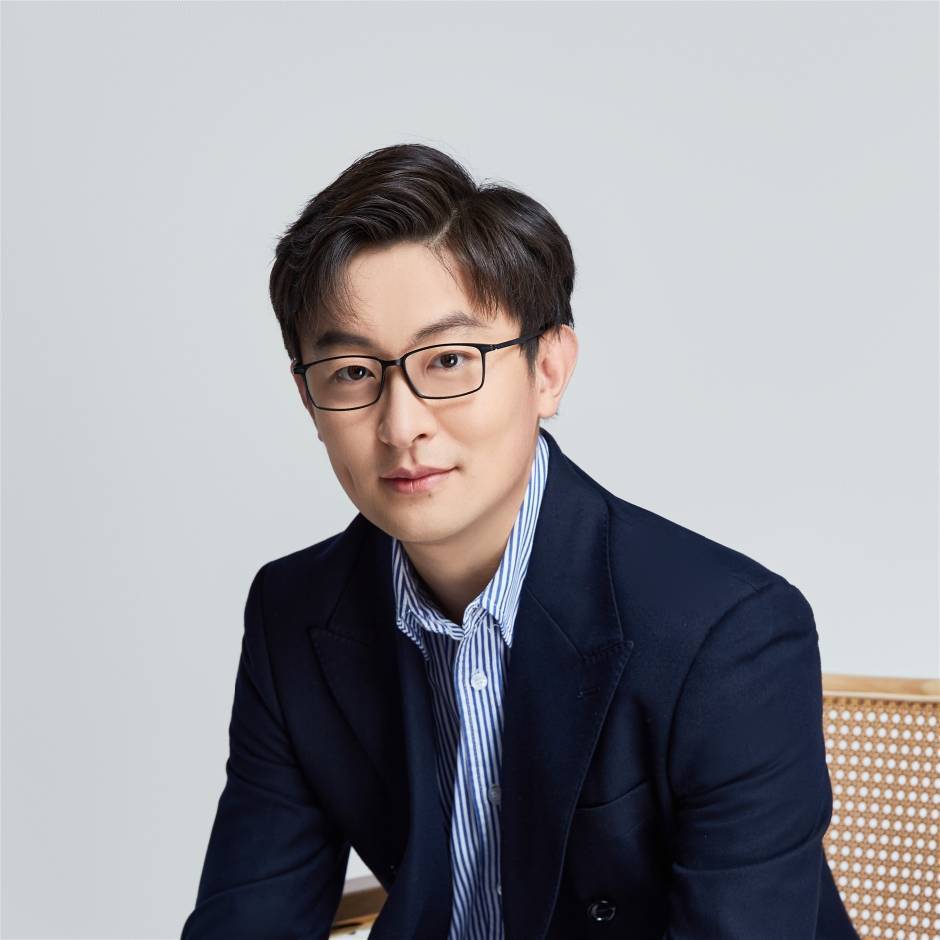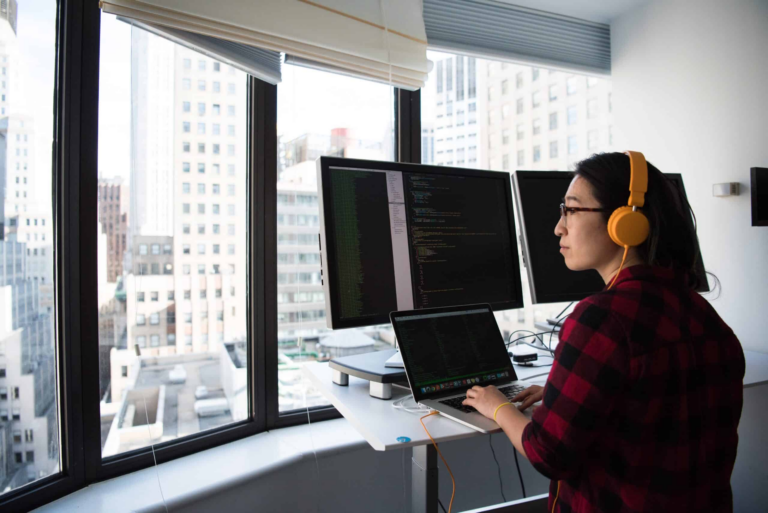The bidirectional inverter is one of the most crucial components of a balcony energy storage system (BESS). This innovative device enables not only the conversion of solar energy into usable electricity for homes but also facilitates the ability to charge the system’s battery from the grid. As energy storage technologies advance, bidirectional inverters are gaining more attention due to their efficiency and flexibility in managing power flows. In this article, we will explore their technical principles in detail, highlighting their advantages and providing a clear understanding of how they contribute to optimizing energy storage and usage.

1. Understanding the Basics: What Is a Bidirectional Inverter?
A bidirectional inverter is a type of power inverter that can handle two-way power flows. Unlike traditional inverters, which convert direct current (DC) from solar panels into alternating current (AC) for home use, bidirectional inverters can also reverse this process. This means they can convert AC power from the grid back into DC to charge the energy storage system.
In essence, these inverters are the bridge between solar panels, energy storage, and the grid. This dual functionality allows for greater flexibility in how energy is used and stored, offering benefits such as peak shaving, load shifting, and backup power during outages.
1.1 Key Functions of a Bidirectional Inverter
- Conversion of DC to AC: Converts DC from solar panels or batteries into AC for household appliances.
- Conversion of AC to DC: When needed, the inverter can pull power from the grid, converting AC into DC to charge the storage battery.
- Load Management: Helps manage energy consumption by determining when to use stored energy versus drawing from the grid.
- Grid-Tied Operation: In some cases, excess energy can be fed back into the grid, providing additional flexibility.
2. Technical Principles: How Does a Bidirectional Inverter Work?
2.1 The Inversion Process: DC to AC Conversion
At the heart of a balcony energy storage system is the photovoltaic (PV) array that generates DC power from sunlight. Most household appliances, however, require AC power to function. The bidirectional inverter performs the critical function of converting this DC power into AC power.
The process involves pulse-width modulation (PWM), a technique that allows the inverter to create a smooth AC waveform from DC power. The DC power from the solar panels passes through a series of transistors, which are switched on and off at high speeds to approximate an AC waveform.
2.2 The Rectification Process: AC to DC Conversion
This is where the bidirectional capability of the inverter comes into play. When the battery in the energy storage system is low, or when electricity prices are lower during off-peak hours, the inverter can reverse the conversion process. It takes AC power from the grid and converts it into DC to charge the battery.
This rectification process uses diodes or active rectifiers to convert the AC back into a DC form that the battery can store. This ability to charge from the grid is a major advantage of bidirectional inverters, allowing users to balance energy consumption and optimize the cost-effectiveness of their energy use.
3. Major Benefits of Bidirectional Inverters
3.1 Improved Energy Efficiency
One of the most significant advantages of using a bidirectional inverter in your balcony energy storage system is its ability to improve energy efficiency. By allowing for two-way energy flows, homeowners can store excess solar energy during the day and use it at night or during peak demand periods when grid electricity is more expensive.
3.2 Optimized Energy Storage
Bidirectional inverters enable smart energy storage strategies. For example, during times of low energy demand, the system can store solar energy in batteries. During peak times or when grid prices are high, the inverter switches to battery power, helping to reduce electricity costs. This load shifting capability leads to a more optimized and cost-effective energy solution.
3.3 Greater Flexibility
Traditional inverters only allow for one-way power flow, limiting the system’s flexibility. Bidirectional inverters, on the other hand, provide greater control over how and when energy is used. This flexibility is particularly important for systems that integrate renewable energy sources like solar, where energy generation can be intermittent.
3.4 Backup Power During Outages
In regions where power outages are a concern, bidirectional inverters can provide backup power by tapping into stored energy in the battery. In the event of a grid failure, the inverter can switch to off-grid mode, ensuring that essential appliances continue to receive power from the energy storage system.
3.5 Seamless Grid Interaction
Bidirectional inverters also allow for grid-tied operation, meaning that when the battery is full and solar energy is still being generated, the excess power can be fed back into the grid. Some energy markets even offer compensation for this, allowing homeowners to sell excess energy back to the utility.
4. Key Components of a Bidirectional Inverter
To better understand how bidirectional inverters work, let’s break down their key components:
| Component | Function |
|---|---|
| Power Transistors | Switches that rapidly turn on and off to convert DC into AC or vice versa. |
| Control Unit | Manages the timing of the transistors and ensures the system operates efficiently. |
| Diodes/Rectifiers | Used in the rectification process to convert AC from the grid into DC for charging the battery. |
| Cooling System | Keeps the inverter from overheating during high loads or extended operation. |
| Monitoring Software | Provides real-time data on energy generation, storage levels, and usage patterns. |
Each of these components plays a crucial role in the overall performance of the system, ensuring that energy flows are managed effectively.
5. Applications of Bidirectional Inverters in Balcony Energy Storage Systems
5.1 Residential Use
For homeowners, the balcony energy storage system integrated with a bidirectional inverter offers an ideal solution for managing energy use. By storing solar energy and using it during peak hours, residents can reduce electricity bills and increase self-sufficiency. The ability to charge from the grid during off-peak times further enhances the cost-effectiveness of the system.
5.2 Commercial Applications
In commercial settings, bidirectional inverters can help businesses manage their energy consumption more efficiently. By integrating storage systems, companies can reduce energy costs during peak demand periods and even participate in demand response programs by feeding excess energy back into the grid.
5.3 Off-Grid and Backup Solutions
Bidirectional inverters are also ideal for off-grid systems, where they can manage both solar generation and energy storage. Additionally, they provide a reliable source of backup power during outages, making them essential in regions where grid stability is a concern.

6. How Bidirectional Inverters Optimize Storage and Utilization
6.1 Peak Shaving
One of the key strategies enabled by bidirectional inverters is peak shaving. This involves using stored energy during peak demand periods, when electricity prices or grid demand are highest. By doing so, users can avoid paying higher rates and reduce the strain on the grid.
6.2 Load Shifting
Load shifting is another energy management strategy made possible by bidirectional inverters. This involves storing energy during periods of low demand (and lower grid prices) and using it during high-demand periods. Load shifting can lead to significant cost savings, particularly in markets where electricity prices fluctuate throughout the day.
6.3 Time-of-Use Optimization
Many utility companies offer time-of-use pricing, where electricity rates are lower during off-peak hours. With a bidirectional inverter, you can charge your energy storage system during these off-peak times and use the stored energy during peak periods, optimizing your energy costs.
7. Challenges and Considerations for Bidirectional Inverter Implementation
7.1 Initial Cost
One of the primary considerations for installing a bidirectional inverter is the initial cost. While the long-term benefits of energy savings and grid independence often outweigh the upfront expense, the cost can be a barrier for some users. However, as the technology becomes more widespread, prices are expected to come down.
7.2 Efficiency Losses
While bidirectional inverters are designed to be highly efficient, there will always be some energy losses during the conversion process. These losses can range from 5% to 10%, depending on the quality of the inverter and the load conditions.
7.3 Maintenance Requirements
Like all electrical components, bidirectional inverters require regular maintenance to ensure optimal performance. Components such as the cooling system and power transistors can wear out over time, necessitating periodic inspections and replacements.
8. Visualizing the Operation of a Bidirectional Inverter
To better understand how a bidirectional inverter works, we’ve created a simplified flow diagram that illustrates the energy flows between solar panels, the grid, and the energy storage system.
graph LR
A(Solar Panels) -->|DC Power| B(Bidirectional Inverter)
B -->|AC Power| C(Home Appliances)
B -->|DC Power| D(Battery Storage)
D -->|DC Power| B
E(Grid) -->|AC Power| B
B -->|AC Power| EThis diagram shows how the inverter can both convert DC power from the solar panels into AC for household use and reverse the flow to charge the battery from the grid.
9. Key Takeaways for Businesses Considering Bidirectional Inverters
For businesses looking to offer or install balcony energy storage systems, understanding the role of bidirectional inverters is essential. Here are some of the key takeaways:
9.1 Increased Energy Independence
Bidirectional inverters provide users with more control over their energy consumption, allowing them to store excess energy and optimize its use during peak demand periods.
9.2 Flexibility in Power Management
The ability to charge from the grid and discharge to appliances or back to the grid offers significant flexibility, making these inverters ideal for both residential and commercial applications.
9.3 Cost Optimization
With bidirectional inverters, users can take advantage of time-of-use pricing, load shifting, and peak shaving, all of which help to lower overall energy costs.
10. Conclusion: Why Bidirectional Inverters Are Essential for Modern Balcony Energy Storage Systems
Bidirectional inverters are becoming a foundational technology for modern energy storage systems, particularly in balcony energy storage applications. Their ability to manage two-way power flows, coupled with their role in enhancing energy efficiency and flexibility, makes them an indispensable component for homeowners and businesses alike.
As the demand for energy independence and renewable energy integration continues to grow, bidirectional inverters will play an increasingly important role in enabling users to make the most of their energy storage systems. Whether you’re a business looking to install these systems for clients or a homeowner interested in optimizing your energy use, bidirectional inverters offer a robust, flexible solution for managing energy in today’s increasingly complex power landscape.





